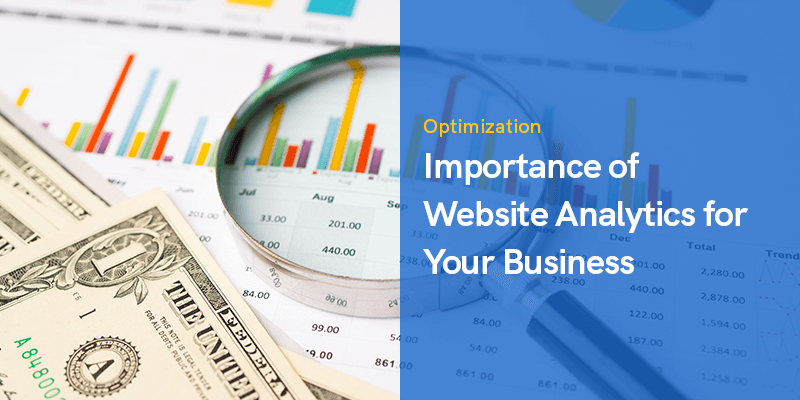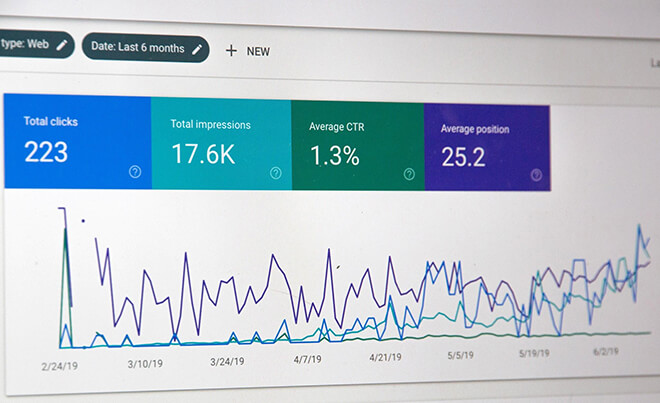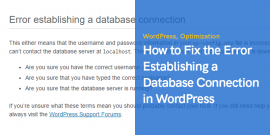
Importance of Website Analytics for Your Business
As a business owner or a marketer, when creating an online marketing strategy, you may get a little overwhelmed thinking about what approaches to follow.
There are a million ways to market your business/product/service, and choosing the best one can be a bit of a challenging task. According to reports, the average conversion rate for a website is 2.35%.
This means that for every 100 users that visit your website via direct search, social media, or any other sources, only 2 of them will convert.
Importance of Website Analytics
So, there are a lot of things you need to determine in order to increase your conversion rate and improve your revenue.
With that said, one of the most crucial aspects you need to focus on is optimizing your website content based on users’ interests.
Understanding who your target audience is, how they interact with your website, where they come from, etc.
will help you create a more relevant content that interests them and also help you in improving upon the UI and UX to reduce any friction associated with conversions.
But how can it be achieved? Using website analytics! Website analytics is an integral part of every online marketing campaign.
Simply put, the goal is to analyze your website traffic and then find ways to improve on it.
If you are wondering why web analytics is important for your business growth, then this article is dedicatedly created for you.
In this post, we will discuss the primary reasons for the importance of website analytics for the growth of your business.
Let’s get started:
What Is Website Analytics?
There is a lot of information and data that you can collect regarding how people interact with your website.
The data can be anything from which sites led the users to your website, the pages they spend the most time on, and their overall page visits, among many other things.
Tracking of all these data and beyond is what is known as website analytics.
In other words, website analytics is the analysis, collection, measurement, and reporting of internet-generated user data for the purpose of understanding and optimizing web content and usage.
For startups and small businesses, the sheer amount of data they can access can be a bit overwhelming, and so is determining what to do with them.
As a digital marketer, your goal is to make sense of this information as it allows you to keep a finger on your website’s pulse.
Some of the marketers confuse web analytics with website statistics. Please note that there are significant differences between the two.
While web statistics gives you simple details like how many visitors you had last month, web analytics goes much more into the details, offering more metrics.
In simple terms, web analytics help you make the underlying trends clear and put a brighter light on ‘the reason why questions’ for things that happen on your site as they do.
All in all, website analytics help you in improving your website, as well as the online marketing associated with it.
You can use website analytics for measuring and benchmarking site performance and look at the KPIs (key performance indicators) that drive your business.
Why Does Your Business Need Website Analytics?
The most successful startups and small businesses track and record as many metrics as they can. Without that, you simply cannot know what is working for your business and what isn’t.
Moreover, it is almost impossible to identify where you are wasting your money and time in marketing, and how you and your team can work to improve it.
Truth to be told, the majority of the marketers use their so-called ‘gut feeling’ and intuition to make key marketing decisions.
Although you are always advised to follow your gut feeling, you cannot just simply argue with stats and numbers. They are never wrong.
Metrics don’t have any expectations or biases; instead, they are easy to compare – simply Black and White.
That means if you are not doing web analytics, you are trying to switch on the lights in the extreme dark.
You can perform website analytics in whatever way you feel comfortable with like creating spreadsheets, social media reports, etc. A marketing report is key to proving the value of your marketing plan.
It is a solid, data-driven way of displaying what you have accomplished so far with your strategies.
It can help you guide your actions as you include important information and lessons learned from marketing campaigns and other activities.
Website analytics, combined with reporting, can accurately track the effectiveness of your marketing campaigns to ensure that your future efforts to the point and apt.
How Does Website Analytics Work?
Marketers use an analytics tool that helps them count each time the users’ clicks on a website link or the page gets a visitor. The analytics tool ‘tag’ the web pages by inserting a JavaScript snippet in the website code.
This helps the marketers in gathering all the necessary information like the user’s geographic location, browser used, and device used to access the website, via IP address.
On the other hand, web analytics use ‘cookies’ for tracking individual sessions and also for determining any repeat visits from the same web browser.
Nevertheless, web browsers have certain restrictions around the use of code snippets, and since the majority of the users delete cookies after use, it is difficult to claim complete accuracy of the information and data generated.
And different analytics tools generate slightly different results. Irrespective of that, website analytics will present you with an all-comprehensive data that is enough to prepare your next marketing campaign.
Here is a breakdown of the data you can generate with web analytics:
Campaign Data
- Which keyword searches result in the site visit
- Which web pages referred the most traffic
- Which campaigns drove the most traffic
- Campaign medium breakdown, like social media vs. email marketing
Audience Behavior
- Bounce rate
- Number of pages per visit
- Length of time spent per visit
- Frequently visited pages
- Common exit pages
- Common landing pages
Audience Data
- What country they are from
- Their age and profession
- Number of unique visitors, number of visits
- Returning vs. New Customer Ratio
- What device they are on (mobile, desktop, Android, iOS, Windows, Mac, Linux)
- What browser they use (Mozilla Firefox, Google Chrome, Safari, Bing, etc.)
Not All Metrics Are Equal
With the sheer amount of data available at our fingertips, it can be difficult to know which information is relevant and which isn’t.
Marketers can measure everything from social media likes to website visitors.
This ability to gather and analyze information allows you to determine what’s wrong and what doesn’t need improvement.
In order for your web analytics to be extremely productive, they need to be measured and tracked.
You need to keep in mind that web analytics is primarily good for a single time period – for a particular campaign.
They become less useful and relevant if you use the same measures and metrics over a longer period of time.
Hence, you are advised to keep updating your analytics report once every quarter or whatever time period you feel is necessary.
When you compare the analytics weekly, monthly, or quarterly, you will be able to see the trends as they are ongoing.
This ensures that you can make adjustments to your marketing campaigns accordingly. As said, not all metrics are equal.
Marketers often get confused between vanity metrics and metrics that they should track. Vanity metrics have nothing to do with your bottom line.
And they give an inflated sense of success. While vanity metrics are easy to measure, they are influenced by numerous factors that they are unreliable.
Experienced marketers relate their metrics with ROI (return on investment). If the metrics you are analyzing, don’t tell anything about your revenue, using them to justify your business is a bad idea.
The following are examples of vanity metrics:
Email Open Rates
For some, email open rates seem like a lucrative metric because the more people open the email, the better.
But the problem is that email open rates only tell you whether your pitch had a compelling subject line that encouraged the recipients to open the mail.
Social Media Likes
Social media likes is another vanity metric that doesn’t tell anything about the ROI. Social media will definitely be a part of your marketing strategy.
You can easily get caught up in how many likes you have on Instagram, Twitter, Facebook, etc.
Unless and until you are paying for the advertisements, only a few numbers of followers see your posts.
View Count
Video marketing has gained immense prominence in the last couple of years.
So, it is possible that your business has a YouTube account or have videos on your website. In case, if you are considering reach, then view count is imperative.
But, if you share videos on social media platforms, the view may not mean what you think it means.
For example, on Facebook and Twitter, if someone watches your video for 3 seconds, then it is counted as a view.
For YouTube, someone has to watch the video for 30 seconds to consider it as a view. So, if you are sharing 4-5-minute videos, this metric is of no use.
Blog Post Views
Blog post views means that you have created quality content.
However, this metric doesn’t indicate from where these blog post views are coming from, whether it answered the readers’ questions, and for how long the readers’ spent time reading or not reading the blog post.
Metrics You Should More Focus On
It is easy to feel confused if you have been analyzing the above-mentioned metrics.
As said, you should put more focus on tracking those metrics that directly relates to your return on investment (ROI).
Consider the following metrics to get a better understanding:
Bounce Rate
“Bounced” is a term that describes when a visitor leaves your website to not to come back.
However, there are certain voids in this metric as well.
What if the visitor opened your website, took a screenshot of the Contact page and then left? So, you cannot just base everything from the bounce rate.
But, it will be helpful if you analyze the bounce rate of each of your web pages.
This makes it easy for you to determine what actions the visitors might be taking once they land on your page.
As a result, you will be able to fix the issues with pages having high bounce rates by determining what other pages have done to have lower bounce rates.
Engagement
Replace your social media followers metric with engagement.
Engagement determines how many people are commenting and liking your social media posts.
The goal is to identify the average number of likes and comments you have in each post.
To start with, loot at the last 10 of your posts and add the number of likes and comments you received on these posts. Once you add them, divide this number by 10.
You will get the average number of likes and comments for the 10 posts you are looking at.
Take the average and divide it with the total number of followers you have on that particular channel.
Take the number you get and multiply it with 100 to get the percentage of engagement.
Engagement tells whether or not your followers actually care about what you post on social media. On Facebook, you can actually see how many people are watching your video until the end.
So, instead of just focusing on the view count, focus on metrics like average view duration and average completion, among others, that shows engagement.
Conversion Rate
Website visitors and traffic are an imperative part of online marketing.
Nevertheless, if hundreds and thousands of visitors are accessing your website and only a fraction of them are converting into paying customers, then this traffic is of no use.
So, it is important to analyze each and every page of your website to see if they are working according to customer demand, such as the pages are focused on activities that boost the number of visitors converting.
What conversion means to your marketing goals? Well, it can be anything from the purchase of a product to signing up to email newsletters, availing services, or downloading your free guide.
Leads
As a marketer, it is important that you know from where your customers and leads are coming from.
There are certain web analytics tools that let you know how your potential leads are finding you, from where they are coming from, how they are interacting with your website, and how deep they are caught in your sales funnel.
Exit Pages
Don’t confuse exit pages with bounce rate.
A bounce happens when a user accesses your website and leaves after visiting only one page.
On the other hand, exit happens when the user accesses multiple pages of your website and then leaves.
Examine each of these pages and determine why people are leaving your site even before getting to the order receipt page.
Conclusion
This is what website analytics looks like.
Web analytics is hugely helpful when it comes to creating a strong marketing strategy and growing your business.
There is plenty of analytics out there, and not every data will give you actionable information.
So, the goal is to focus on those metrics that are directly associated with your return on investment.
To wrap up, here is how website analytics can help your business:
- Easily track your e-commerce metrics and use them for more sales
- Utilize your top outbound links for partnership opportunities
- Build strategies and track top referrals to gain more of them
- Boost your website’s SEO
- Know your best content and concentrate on it
- Get to know your visitors and enhance the user experience
Recommended Posts

6 Effective Tips to Optimize Elementor Website
June 21, 2022





